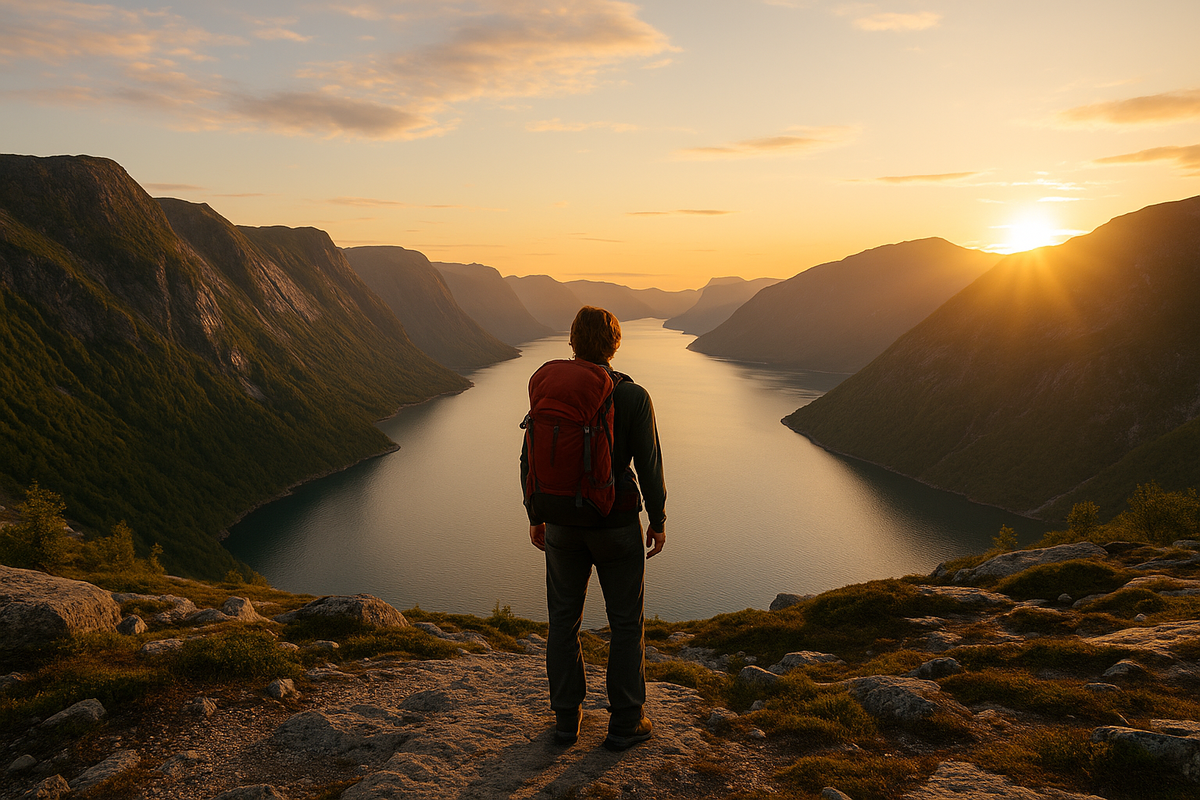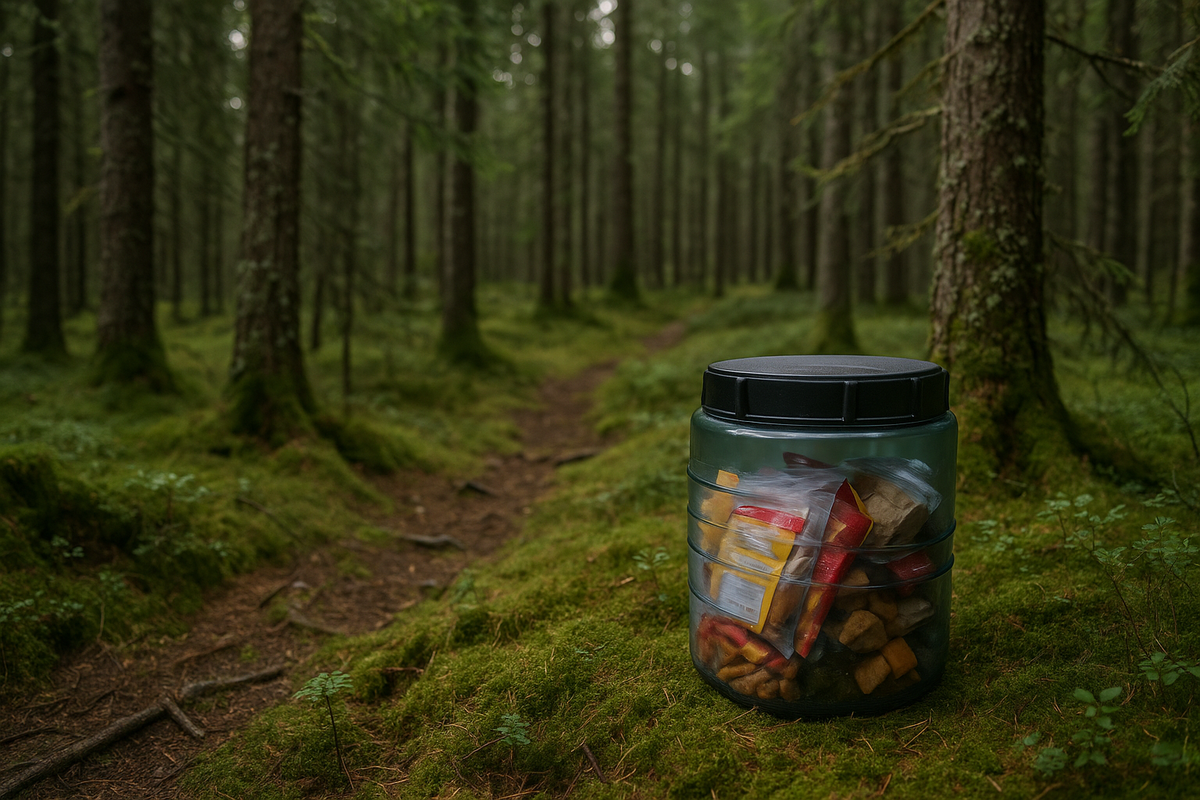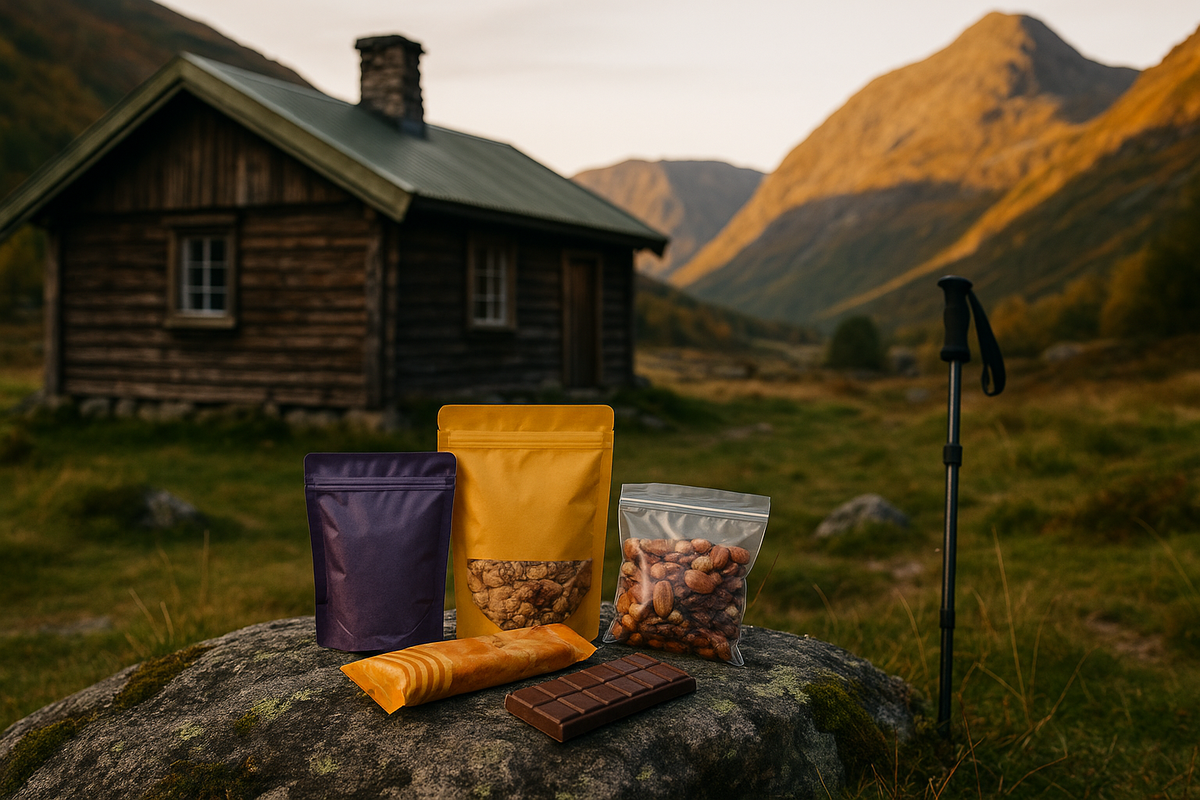Food on the route cache food and save weight in your backpack
Travelling light is such a special pleasure. Discover the amazing life hacks for caching food along routes in Norway's national parks! These incredible tricks will make your backpack a breeze to carry, allowing you to enjoy your journey without the weight of your supplies. Discover how to cleverly hide your food in bear containers, mark it with GPS tags, and create an amazing menu for several days.

Why is it important to cache food on routes in Norway?
Storing food in your backpack makes it much lighter, especially if you're planning a long walk. Norway's national parks have handy places where you can leave food and water in advance and get more without having to carry everything at once.
Which animals might want your food, and how can you keep it safe?
In Norway, foxes, rodents and sometimes bears in remote areas may come to your food. Use airtight containers to store food and keep animals away. You can hang the canisters from trees or store them in specially designed places.
How do I record GPS coordinates correctly when storing food?
Use reliable GPS devices or apps such as Gaia GPS, Garmin or ViewRanger. It is best to put markers near things that are easy to spot (like rocks, trees, and signposts) and take extra photos of where the cache is for extra security.
Which foods are best for caching?
The best foods to eat when you're feeling hungry are things like freeze-dried meals, oats, nuts, chocolate, energy bars and dried fruit. It is particularly handy to buy pre-prepared sets of dried fruit and snacks in Norwegian 'adventure shops' in Rema 1000 supermarkets at the start of the route.

Which campsites or huts are good for intermediate caches?
The Gjendesheim huts in Jotunheimen, Finsehytta in Hardangervidda or Rondvassbu in Rondane are great places to store food and other supplies. They often have storage space for travellers' food.
What's the best way to plan a menu for a 5-day trip?
Plan a menu consisting of light, high-calorie and nutritious foods. For example:
- For breakfast, eat porridge with dried fruit and nuts.
- Lunch will be energy bars, nuts and dried fruit.
- Dinner: meals that you can re-heat (like soups, pasta and porridge).
- You will need to plan for 500–700 grams of food for each person each day.
What's the best way to filter and store water for cooking?
Use portable water filters such as Sawyer or Katadyn. Collect water from streams and lakes, filter it and store it in lightweight bottles or soft hydration systems. This will save space and weight in your backpack.
What is Allemannsretten and how does it apply to food caching?
Allemannsretten lets you enjoy nature freely, but you can't store food in the environment for long periods of time. Only use temporary caches, and make sure you take everything with you when you finish your route.
Storing food is an absolute game-changer – it'll make your backpack a breeze to carry and your trip a total breeze! Make your outdoor adventures in Norway even more enjoyable and easier by choosing the right foods and storing them safely and responsibly!
Have you tried storing food along your route? We can't wait to hear all about your experiences and tips in the comments! We are thrilled to share the best tips and stories in our catalogue to help other travellers go hiking without unnecessary weight!






2 comments
Log in to leave a comment